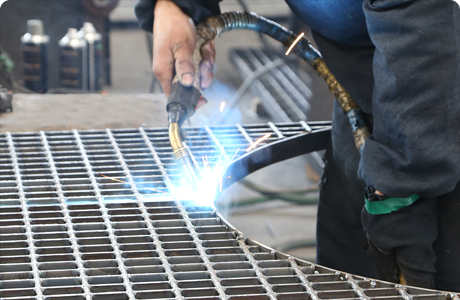The Importance of Anti-Climb Railings in Urban Safety
In an age where urban landscapes are constantly evolving, the need for safety measures has become paramount. One such measure that has gained attention in recent years is the implementation of anti-climb railings. These structures serve a critical role in enhancing safety, preventing unauthorized access to restricted areas, and protecting public spaces from vandalism and crime.
What Are Anti-Climb Railings?
Anti-climb railings are specially designed barriers that deter unauthorized individuals from climbing over them. Typically constructed from durable materials such as steel or wrought iron, they are strategically designed with features that make climbing challenging. This includes the use of spikes, serrated edges, or a tall, smooth structure that discourages any attempts to scale them. The primary goal of these railings is to provide a physical barrier that enhances the safety and security of buildings, parks, and other public areas.
The Necessity of Anti-Climb Railings
Urban environments often face challenges such as vandalism, theft, and trespassing. Public facilities like schools, parks, government buildings, and even private properties may be at risk of unauthorized access. Anti-climb railings serve to protect these spaces by making it significantly more difficult for individuals to gain entry where they should not be. Their presence acts as a deterrent, reducing the likelihood of criminal activities and ensuring the safety of both property and individuals.
Moreover, anti-climb railings contribute to the overarching goal of crime prevention in urban planning. When communities invest in visible security measures, such as these railings, it fosters a sense of safety among residents and visitors. This is especially pertinent in high-traffic areas where large crowds gather. The psychological impact of feeling secure cannot be understated; it encourages social interaction and civic participation, vital components of thriving urban life.
Design Considerations
anti climb railing

While the primary function of anti-climb railings is safety, their design should also be aesthetically pleasing to blend into the urban environment. This balance between function and aesthetics is crucial, as overly aggressive designs can lead to a sense of hostility rather than safety. There are numerous architectural styles that can be adopted, from sleek modern designs to more classical appearances that complement historic buildings.
Color also plays a significant role in the design process. Brightly colored railings can be used to enhance visibility and awareness, further deterring potential climbers. Additionally, municipalities might consider using custom designs that reflect the community's identity, incorporating local art or themes that resonate with residents.
Technological Integration
In recent years, there has been an increase in the integration of technology with traditional anti-climb measures. Smart sensors can be installed to monitor movements around sensitive areas, alerting security personnel when someone attempts to scale a railing. This combination of mechanical barriers and technological solutions enhances overall security levels, providing a comprehensive approach to urban safety.
Moreover, the use of materials that resist weathering and corrosion ensures that anti-climb railings remain functional and visually appealing over time. This approach enhances longevity and reduces maintenance costs, making them a long-term investment for cities and property owners alike.
Conclusion
In conclusion, anti-climb railings are an essential component of urban safety that cannot be overlooked. By providing a physical barrier against unauthorized access, these railings contribute to crime prevention, enhance public safety, and foster a sense of security within communities. As cities continue to expand and evolve, incorporating such safety measures will be critical in maintaining order and ensuring the well-being of residents and visitors alike. The design and implementation of anti-climb railings should be a thoughtful process, balancing aesthetics with functionality, and adapting to the specific needs of each environment. Through these efforts, we can create safer, more welcoming urban spaces that encourage community engagement and safety.
-
Why Galvanized Trench Cover Steel Grating Resists Corrosion
NewsJul.10,2025
-
The Versatility and Strength of Stainless Expanded Metal Mesh
NewsJul.10,2025
-
Load Calculations in Steel Grating Platforms
NewsJul.10,2025
-
Keeping Pets and Kids Safe with Chicken Wire Deck Railing
NewsJul.10,2025
-
Hole Diameter and Pitch for Round Perforated Metal Sheets
NewsJul.10,2025
-
Aluminium Diamond Mesh in Modern Architecture
NewsJul.10,2025
Subscribe now!
Stay up to date with the latest on Fry Steeland industry news.

